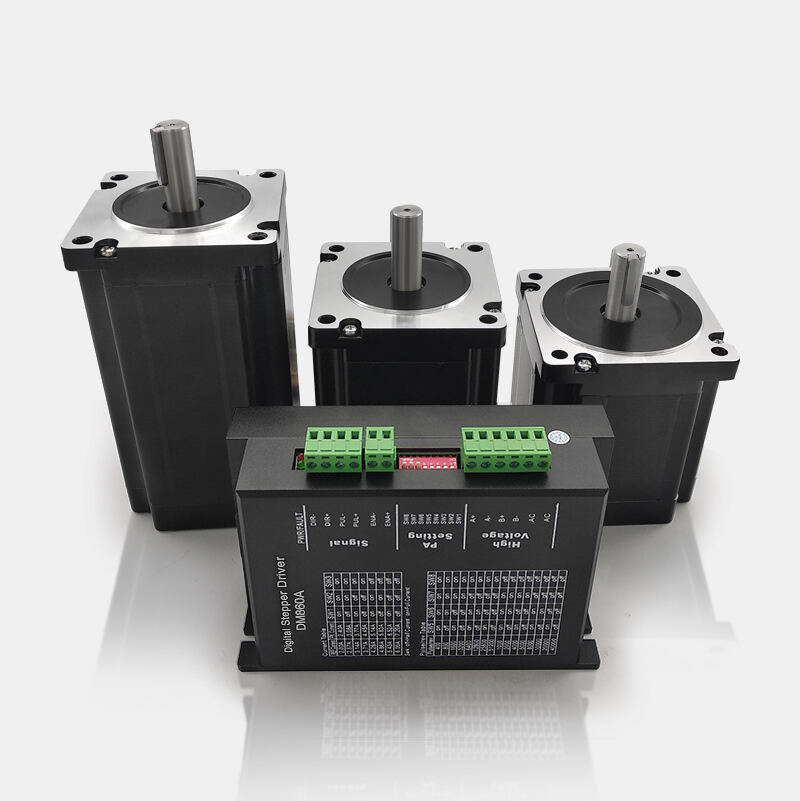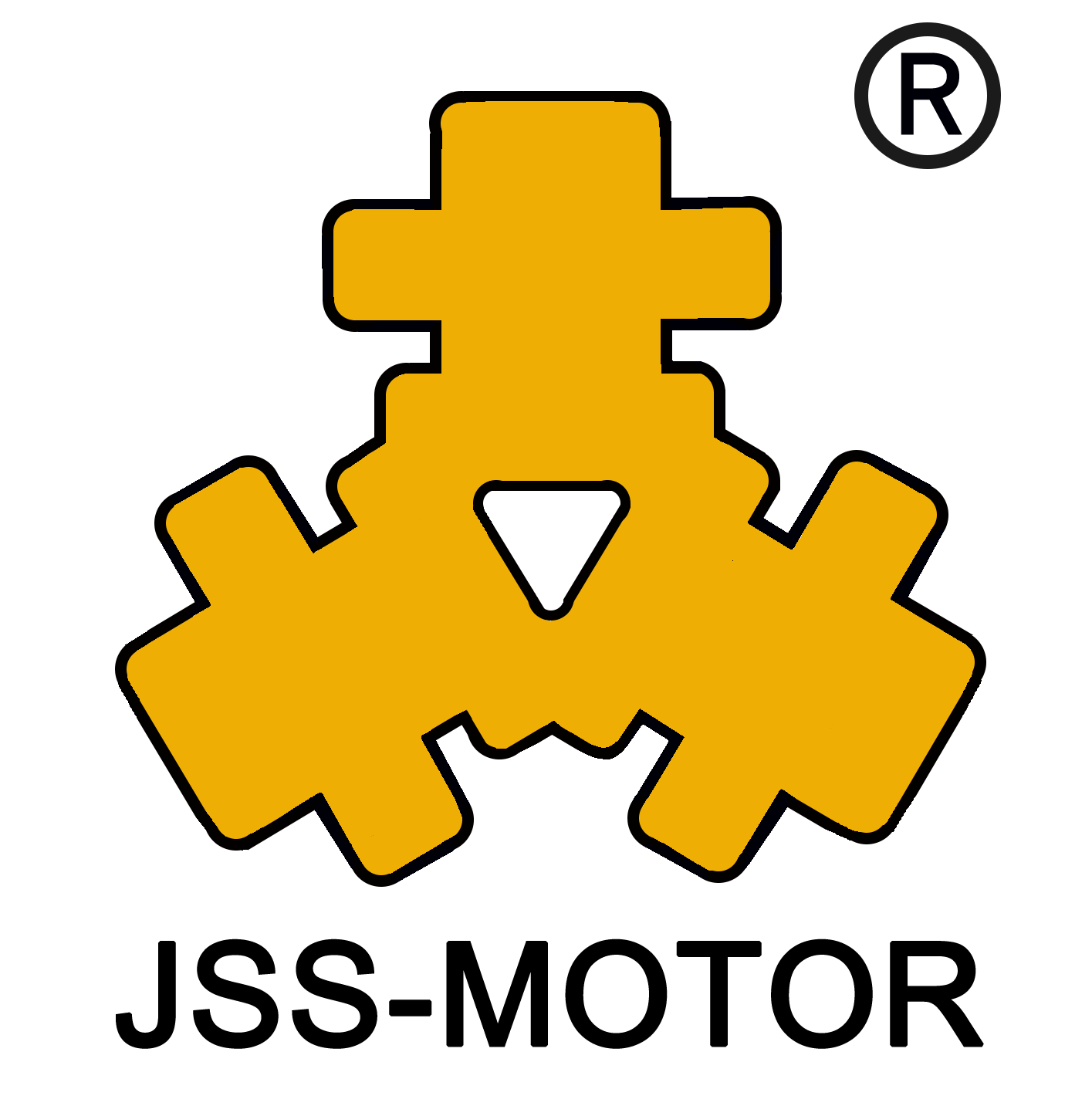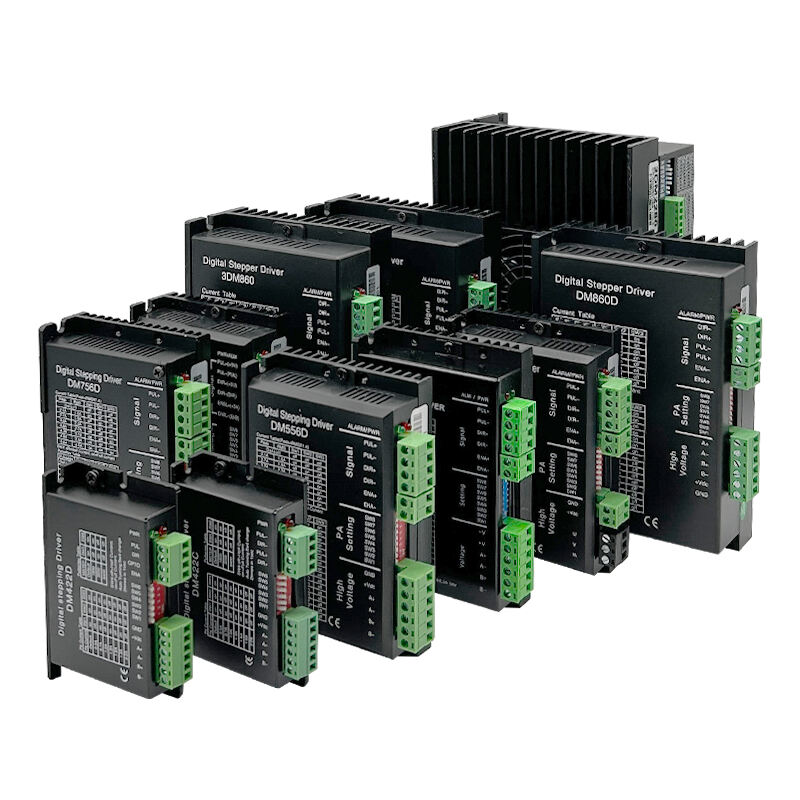How Do Different Stepper Driver Architectures Affect Torque and Speed Control?
Introduction to Stepper Motor Control
Stepper motors are widely used in precision motion control applications, from 3D printers and CNC machines to robotics and industrial automation. They are popular because of their ability to provide accurate positioning without the need for feedback systems. However, the performance of a stepper motor depends heavily on the type of driver that controls it. Stepper driver architectures play a critical role in determining how effectively torque and speed are managed. Different designs affect current regulation, microstepping, power efficiency, and overall motion smoothness. Understanding these architectures is essential for engineers and system designers seeking to optimize torque, speed, and accuracy.
Basics of Stepper Motors
How Stepper Motors Work
A stepper motor converts digital pulses into discrete mechanical movements. Each pulse advances the motor shaft by a fixed angle, known as the step angle. By controlling the sequence of current through the motor windings, the driver determines rotation direction, torque, and speed.
Torque and Speed Characteristics
Stepper motors exhibit high torque at low speeds, but torque decreases as speed increases. This torque-speed trade-off is influenced by driver architecture, current control methods, and supply voltage. Drivers must manage these factors to maximize performance while avoiding resonance and instability.
Overview of Stepper Driver Architectures
Constant Voltage Drivers
This is the simplest form of stepper driver architecture, applying a fixed voltage to the motor windings. While easy to implement, it offers poor torque control at higher speeds because current is not regulated effectively. As motor speed rises, inductance limits current, reducing torque output.
Constant Current (Chopper) Drivers
Modern stepper driver architectures typically use constant current regulation, also known as chopper drive. The driver rapidly switches the supply voltage on and off to maintain a target current in the motor windings. This allows higher torque at greater speeds and prevents overheating by avoiding excess current.

Microstepping Drivers
Microstepping is a technique where drivers divide a full step into smaller increments by controlling the current ratio between windings. This results in smoother motion, reduced vibration, and better positioning accuracy. Microstepping drivers rely on advanced current regulation and sine wave approximations to optimize torque and speed simultaneously.
Bipolar vs Unipolar Drivers
Unipolar stepper driver architectures energize only half of a winding at a time, simplifying control but reducing available torque. Bipolar drivers use the full winding with current in both directions, delivering higher torque and efficiency at the cost of more complex circuitry.
Advanced Digital Control Drivers
Modern drivers integrate digital signal processors (DSPs) or microcontrollers for precise current shaping, adaptive decay modes, and intelligent thermal management. These architectures optimize torque-speed profiles dynamically and reduce resonance issues.
How Driver Architectures Affect Torque
Constant Voltage Limitation
In constant voltage systems, torque drops rapidly at higher speeds due to inductive reactance in motor windings. This makes them unsuitable for applications requiring sustained torque at medium to high RPM.
Current-Regulated Chopper Control
Chopper drivers maintain torque across a wider speed range by ensuring windings receive sufficient current regardless of inductance effects. They improve acceleration performance and maintain consistent torque output under varying loads.
Microstepping and Torque Distribution
Microstepping improves smoothness but reduces incremental torque per microstep since current is shared between windings. However, the overall torque profile benefits because resonance is minimized, and average torque delivery is more stable.
Bipolar Advantage Over Unipolar
Bipolar driver architectures generate more torque because they utilize the entire winding. In applications requiring high torque at all speeds, bipolar designs outperform unipolar drivers.
How Driver Architectures Affect Speed Control
Step Rate and Maximum Speed
The maximum achievable speed depends on how efficiently the driver overcomes inductance to maintain current. Constant current drivers extend usable speed ranges compared to constant voltage designs.
Microstepping for Smooth Speed Ramping
Microstepping reduces mechanical oscillations, enabling smoother acceleration and deceleration. This is crucial for CNC and robotics applications where precise speed transitions prevent overshoot or mechanical stress.
Resonance and Stability
Stepper motors are prone to resonance at certain speeds, causing vibration and loss of steps. Advanced driver architectures with current shaping and adaptive decay modes minimize resonance, improving high-speed stability.
Voltage and Supply Considerations
High-voltage chopper drivers improve speed performance by charging winding inductance more quickly. This enhances torque at higher RPMs, making advanced constant current drivers superior for fast applications.
Practical Applications of Stepper Driver Architectures
3D Printing
Microstepping drivers are essential in 3D printers for smooth motion and accurate layer positioning. The reduction in vibration improves print quality, while constant current control ensures consistent torque for rapid axis movement.
CNC Machines
CNC machines require torque at varying speeds for cutting and milling. Bipolar chopper drivers with microstepping allow smooth control while delivering the torque necessary for heavy tool loads.
Robotics
Robotics systems often need precise low-speed torque and smooth motion in compact spaces. Advanced digital drivers with adaptive control algorithms are used to optimize performance in real-time.
Industrial Automation
In factory automation, stepper driver architectures must balance high torque for conveyor systems with smooth motion for pick-and-place machines. Constant current chopper drivers are typically the standard.
Trade-Offs in Driver Architecture Selection
Cost vs Performance
Simple constant voltage drivers are inexpensive but offer limited performance. High-performance microstepping chopper drivers cost more but deliver better speed, torque, and reliability.
Efficiency vs Complexity
Unipolar drivers are simpler and cheaper but sacrifice torque efficiency. Bipolar drivers provide higher torque but require more sophisticated hardware.
Precision vs Torque per Step
Microstepping enhances positioning accuracy but reduces incremental torque. Designers must balance accuracy requirements with mechanical load needs.
The Future of Stepper Driver Architectures
As industrial and consumer applications demand more efficiency and precision, stepper driver architectures are becoming increasingly advanced. Integration of AI-based algorithms for predictive motion control, enhanced energy efficiency through regenerative braking, and smart thermal management are trends shaping the next generation of stepper motor drivers. Additionally, hybrid systems combining stepper precision with servo feedback loops are emerging to provide the best of both worlds: precise open-loop control with closed-loop reliability.
Conclusion
Stepper driver architectures significantly influence torque and speed control in motion systems. Constant voltage drivers, while simple, are limited by poor torque at higher speeds. Constant current chopper drivers extend torque range and improve overall performance. Microstepping enhances smoothness and accuracy, though it comes with incremental torque trade-offs. Bipolar drivers outperform unipolar designs in torque efficiency, while advanced digital control systems provide adaptive, intelligent performance for demanding applications. By understanding these architectures and their effects, engineers can choose the right driver for each application, ensuring efficiency, precision, and reliability in motion control systems.
FAQ
What is the main advantage of constant current stepper driver architectures?
They regulate current effectively, maintaining torque across a wider speed range and preventing overheating.
Does microstepping increase torque?
Microstepping improves smoothness and accuracy but slightly reduces torque per step since current is shared between windings.
Why are bipolar drivers preferred over unipolar?
Bipolar drivers use the full winding with current in both directions, providing higher torque and efficiency compared to unipolar drivers.
How do advanced digital drivers improve performance?
They use current shaping, adaptive decay modes, and real-time algorithms to optimize torque-speed profiles and reduce resonance.
Can constant voltage drivers be used in modern systems?
They are mostly outdated because they cannot maintain torque at higher speeds, but they may still be used in low-cost or low-demand applications.
What driver type is best for 3D printing?
Microstepping constant current drivers are best, as they provide smooth motion and accurate positioning required for high-quality prints.
How does supply voltage affect torque and speed?
Higher supply voltages allow faster current changes in windings, improving torque at higher speeds and extending maximum RPM.
What causes resonance in stepper motors?
Resonance occurs due to natural oscillations of the rotor when driven at certain frequencies. Advanced drivers minimize this with damping and current shaping.
Are stepper drivers suitable for high-speed applications?
Yes, but only with advanced constant current architectures and high supply voltages. Basic drivers limit usable speed due to inductance effects.
What future improvements can we expect in stepper driver architectures?
Expect more integration of smart algorithms, closed-loop feedback options, energy recovery, and environmentally sustainable designs for higher efficiency and precision.
Table of Contents
- Introduction to Stepper Motor Control
- Basics of Stepper Motors
- Overview of Stepper Driver Architectures
- How Driver Architectures Affect Torque
- How Driver Architectures Affect Speed Control
- Practical Applications of Stepper Driver Architectures
- Trade-Offs in Driver Architecture Selection
- The Future of Stepper Driver Architectures
- Conclusion
-
FAQ
- What is the main advantage of constant current stepper driver architectures?
- Does microstepping increase torque?
- Why are bipolar drivers preferred over unipolar?
- How do advanced digital drivers improve performance?
- Can constant voltage drivers be used in modern systems?
- What driver type is best for 3D printing?
- How does supply voltage affect torque and speed?
- What causes resonance in stepper motors?
- Are stepper drivers suitable for high-speed applications?
- What future improvements can we expect in stepper driver architectures?

